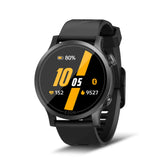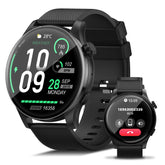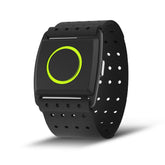Weight Loss Running Guide: Burn Calories & Build Muscle with These Workouts
Running is a powerful tool for weight loss, combining calorie burn with muscle-building benefits—when done strategically. This guide reveals how interval training, hill workouts, and a running watch can supercharge fat loss while preserving lean muscle. Say goodbye to endless steady runs and hello to efficient, results-driven workouts.
1. Maximize Calorie Burn: The Science of Efficient Running
A. Interval Training: Burn More, Faster
- Why It Works: Short bursts of high intensity (Zone 4–5) followed by recovery boost metabolism, creating an “afterburn effect” (EPOC) that burns calories for 24 hours.
-
Types of Intervals:
- HIIT: 30 seconds all-out sprint + 1 minute walk, repeat 8–10 times (ideal for beginners).
- Fartlek: Unstructured intervals (e.g., sprint to the next tree, jog to the bench) for variety and fun.
- Calorie Burn: A 150-lb person burns ~150 calories in 20 minutes of HIIT—2x more than steady-state running.
B. Hill Training: Torch Calories and Build Strength
- Why It Works: Inclines increase resistance, engaging more muscle fibers (quads, glutes, calves) and burning 10–15% more calories than flat runs.
-
Workout Example:
- 5-minute warm-up jog.
- 6x30-second hill sprints (8–10% incline), walking back down to recover.
- 5-minute cool-down stretch.
2. Build Muscle While Losing Weight: The Running-Resistance Combo
A. Why Muscle Matters for Weight Loss
- More muscle = higher resting metabolic rate (burns more calories at rest).
- Running alone can lead to muscle loss if not paired with strength training—prioritize 2–3 days/week of resistance work.
B. Best Strength Exercises for Runners
- Lower Body: Squats, lunges, and glute bridges to support running form and prevent injury.
- Core: Planks, Russian twists, and dead bugs to improve posture and efficiency.
- Upper Body: Push-ups, rows, and shoulder presses to balance muscle development (especially if you carry a running pack).
C. How to Combine Running & Strength
- Post-Run Strength: Do 15–20 minutes of bodyweight exercises immediately after easy runs (e.g., 3x15 squats, 3x20 crunches).
- Separate Sessions: Dedicate 1–2 days/week to full-body strength workouts, leaving 48 hours between intense leg sessions.
3. Track Progress with a Running Watch
A. Real-Time Calorie Tracking
- Uses heart rate, weight, and pace to estimate calories burned accurately—no more relying on generic calculators.
- EZON GPS Series Feature: Sync with apps like MyFitnessPal to log workouts and monitor daily calorie balance.
B. Workout Design Made Easy
- Preloaded Interval Plans: Customize HIIT or hill workouts with auto-pause for recovery periods.
- Pace Alerts: Ensure you hit target speeds for fat-burning zones (e.g., 60–70% max heart rate for steady runs).
C. Recovery Insights
- Training Load Analysis: Avoid overtraining by tracking weekly mileage and heart rate variability (HRV)—a drop in HRV signals the need for rest.
4. Nutrition Strategies to Support Fat Loss
A. Create a Calorie Deficit (Smartly)
- Aim for a 300–500 calorie/day deficit (too much = muscle loss).
- Example: Burn 500 calories running, eat 200–300 calories less than maintenance.
B. Prioritize Protein
- 1.2–1.6g/kg body weight daily (e.g., chicken, fish, lentils) to preserve muscle during weight loss.
- Post-Workout: Pair carbs (oatmeal) with protein (Greek yogurt) within 60 minutes to aid recovery.
C. Hydrate and Sleep
- Dehydration slows metabolism—drink 3L water daily.
- Poor sleep increases hunger hormones (ghrelin)—aim for 7–9 hours/night to support fat loss.
5. Sample 4-Week Training Plan
Week 1–2: Build a Base
- Monday/Friday: 30-minute easy runs (Zone 2, 60–70% HR).
- Wednesday: 20-minute HIIT (30s sprint, 1m walk, 8 rounds).
- Strength: 2x/week core + lower body exercises (squats, planks).
Week 3–4: Increase Intensity
- Monday/Friday: 40-minute runs with 4x2-minute hills (8% incline, 1m recovery).
- Wednesday: 30-minute Fartlek (alternate 2m fast jog + 1m slow jog).
- Strength: Add weights to squats/lunges; include upper body work (dumbbell rows).
6. Common Mistakes to Avoid
- Overtraining: Running too much, too soon leads to burnout—use your running watch to monitor resting heart rate and take rest days when needed.
- Neglecting Form: Poor posture wastes energy—keep shoulders relaxed, gaze forward, and land midfoot.
- Skipping Strength: Without resistance training, you’ll lose muscle and stall weight loss.
7. Tools to Stay on Track
- Calories Burned Calculator: Use your running watch’s built-in metrics instead of generic online tools for accuracy.
- Meal Prep: Plan high-protein meals in advance to avoid post-workout junk food cravings.
- Community Support: Join a running group or use social media to share progress and stay motivated.
Start Your Journey Today
With the right interval training, strategic muscle building, and a running watch to track every step, you’ll transform running from a chore into a fat-burning, muscle-building machine. Remember, consistency beats perfection—even 20 minutes of intentional running + strength work makes a difference.
Lace up, set your watch, and let each run be a step toward your weight loss goals. The calories burned, muscles built, and confidence gained are worth every stride.
EZON Watch: Professional sports technology brand
https://ezonwatch.com
https://ezonwatch.com









